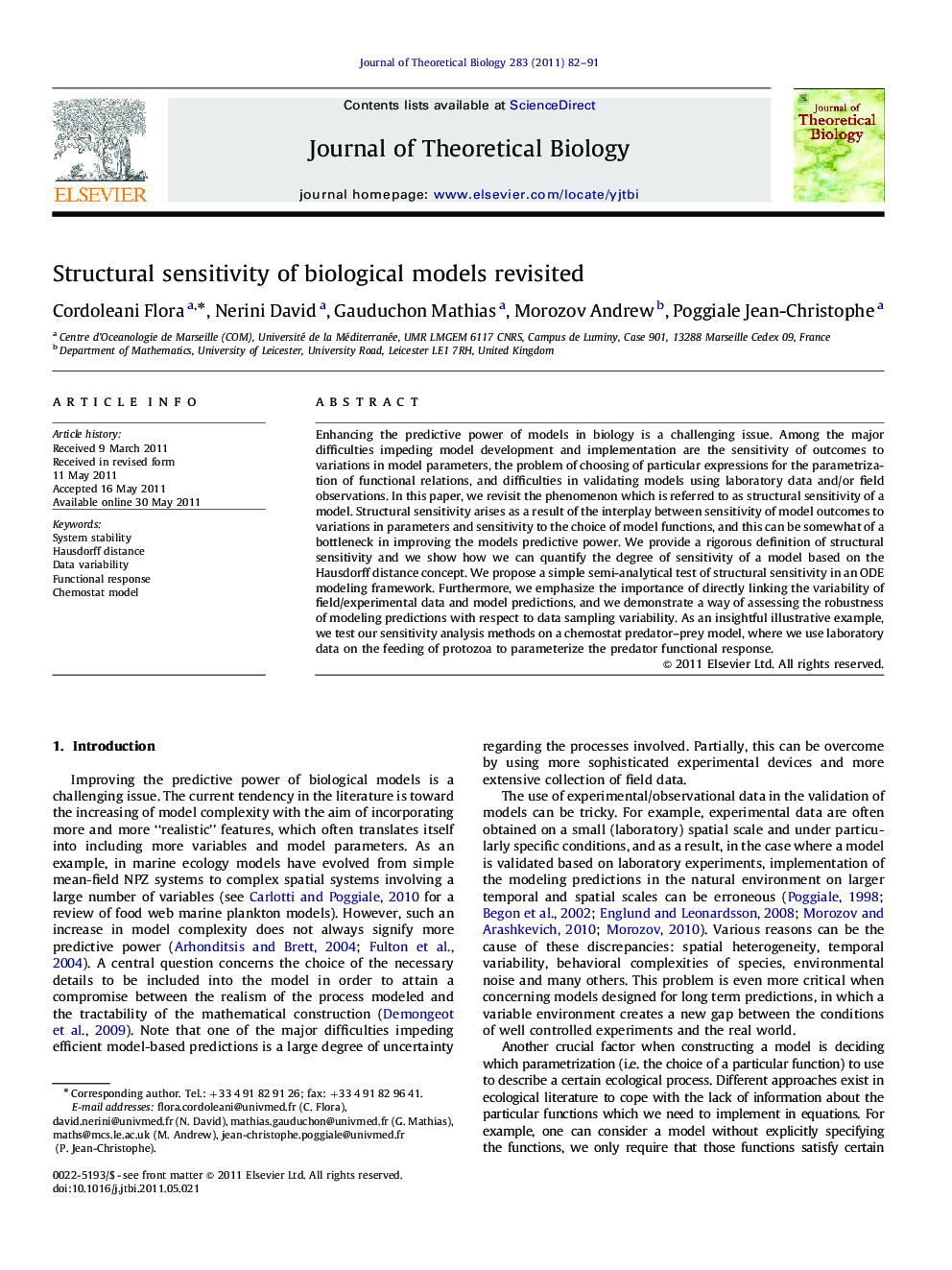| کد مقاله | کد نشریه | سال انتشار | مقاله انگلیسی | نسخه تمام متن |
|---|---|---|---|---|
| 4497047 | 1318913 | 2011 | 10 صفحه PDF | دانلود رایگان |

Enhancing the predictive power of models in biology is a challenging issue. Among the major difficulties impeding model development and implementation are the sensitivity of outcomes to variations in model parameters, the problem of choosing of particular expressions for the parametrization of functional relations, and difficulties in validating models using laboratory data and/or field observations. In this paper, we revisit the phenomenon which is referred to as structural sensitivity of a model. Structural sensitivity arises as a result of the interplay between sensitivity of model outcomes to variations in parameters and sensitivity to the choice of model functions, and this can be somewhat of a bottleneck in improving the models predictive power. We provide a rigorous definition of structural sensitivity and we show how we can quantify the degree of sensitivity of a model based on the Hausdorff distance concept. We propose a simple semi-analytical test of structural sensitivity in an ODE modeling framework. Furthermore, we emphasize the importance of directly linking the variability of field/experimental data and model predictions, and we demonstrate a way of assessing the robustness of modeling predictions with respect to data sampling variability. As an insightful illustrative example, we test our sensitivity analysis methods on a chemostat predator–prey model, where we use laboratory data on the feeding of protozoa to parameterize the predator functional response.
► We have revisited the phenomenon of structural sensitivity.
► We developed a practical criterion for the detection of such structural sensitivity in a given model.
► The chemostat predator–prey model can be more sensitive to the formulation of the functional response than to parameter variations.
► The dynamics of the chemostat model can be strongly influenced by the data sampling.
Journal: Journal of Theoretical Biology - Volume 283, Issue 1, 21 August 2011, Pages 82–91